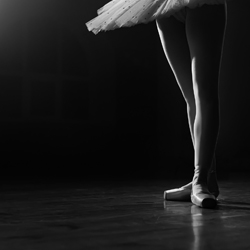The plie is an integral part of many ballet dance moves and isn’t just for visual effect. It is used to reduce the shock on the body and lead to dynamic jumps safely and more fluidly. As experienced and expert ballet teachers in North Tyneside we love to share our love of ballet with our students and in this blog.
As with any dance move, practice makes perfect but there are certain ways in which you can improve your form and develop better plies over time. Here’s our guide.
Plies and Misalignment
One technical aspect of a good plie is the alignment that you have as a dancer. If there is too much tension, it is difficult to perform the move correctly on the regular basis needed.
For beginners, it’s important to have a mirror to work with and monitor your alignment as you go through the move. Start slowly and pay attention to this part of the learning process.
So, what do we mean by alignment?
Ideally, your pelvis needs to be in a neutral position and properly balanced with no lean to one side or the other. Your core or stomach muscles also need to be engaged and tensed slightly and your toes need to be flat on the floor with the arch of the foot fully supported.
This provides a firm base for conducting your plie and it’s critical to start slowly and be cognisant of your form as you practice. Over time, you will naturally move into an aligned position but it’s something you should always come back to every so often.
Flexibility and Warmups
Beginners often go into their dance moves and plies without a proper warm-up. Even professionals with many years of experience will spend several minutes doing warmups to loosen the muscles and oil the joints so that dance movements are more fluid. These kinds of activities don’t just prevent injuries from happening but prepare your body better for the more intensive dance moves during your training session.
Of course, it’s also important that you wear the appropriate footwear that supports moves such as the plie as well as attire that allows for freedom of movement.
Be Aware of Your Limitations
Every dancer is different and the depth and hold of their plie will vary from those around them. The plie requires more dorsiflexion, but this can often be compounded by the plantar flexion that is required when you are on pointe. These two moves work against each other and getting the balance right, even for a professional, can be challenging.
There are ways to accentuate your plie, particularly by coordinating your breathing as you move into the bend or working on the speed of movement. While it involves the lower body, the plie can be helped and accentuated by using the arms and torso and it should always be considered a whole-body movement. Again, working with a mirror is essential to getting the best form, whatever your body type or composition.
Enjoy Your Training
Finally, even if it is difficult at first, you need to find enjoyment in the performance of the plie. It is one of the integral moves in ballet and a professional will perform it thousands of times over a year. Taking joy in the movement and its perfection means you pay attention to form and address issues more positively.
